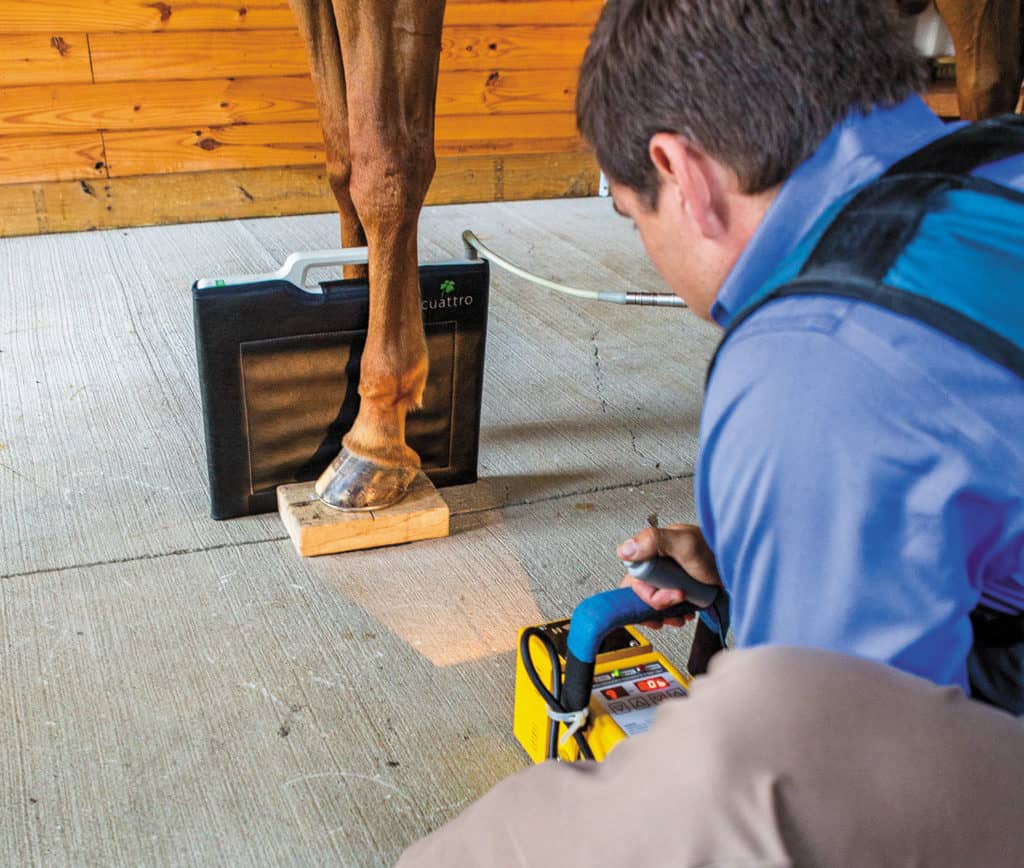
Ex-Laminitic Ponies Overproduce Vasodilators
Researchers have discovered that ponies that have suffered from laminitis have higher blood pressure and therefore overproduce vasodilators.
Laminitis (commonly called “founder”) affects an estimated 7-14% of the world’s equine population. It’s the inflammation of the tiny, interwoven lamellae that attach a horse’s hoof to the underlying coffin bone (third phalanx, or P3) and support the horse’s entire body weight. Anything that impacts the integrity of the lamellae, such as inflammation, weakens their hold. This causes the coffin bone to displace within the hoof capsule and move toward the ground. The condition is very painful and is often life-threatening to horses.
The same disease has several different causes, which include:

Researchers have discovered that ponies that have suffered from laminitis have higher blood pressure and therefore overproduce vasodilators.

Dr. Lori Bidwell lists pain relief medications and therapies that can help horses with acute or chronic laminitis.

Keeping donor and recipient mares in moderate body condition might improve survival rates of transferred embryos.

An equine veterinary podiatrist gives 6 steps for addressing the acutely laminitic horse.

Despite poor hoof quality, the feral horses on Sable Island had a low prevalence of laminitis.

Aging mules and donkeys need to be managed just as carefully as horses. Here’s what you need to know.

Dr. Andrew van Eps gives his advice for returning a previously laminitic horse to movement and exercise slowly.

A veterinarian explains the relationship between high insulin and laminitis in horses.

A veterinary podiatrist explains how X rays can be a useful tool for managing horses with chronic laminitis.

Typically, grass has less sugar overnight and in the early morning than during the day.

Low-starch forage and weight loss can help horses with laminitis regain their foothold.

Researchers assessed laminitis risks in a population of 707 donkeys and found they differ significantly from those of horses and ponies.

Why do some horses wear muzzles, but others don’t? Does your horse need to wear a muzzle year-round? From proper fit to feeding, here’s what you need to know about these weight-loss contraptions.

Learn what makes managing ponies special—from their critical need for nutritional supervision to their often feisty personalities.

What can an owner do to control a horse’s foot pain? We turned to two equine veterinarians that spend a lot of time managing horses’ feet to find out.

From growing a thick winter coat to producing heat as they digest forage, here’s how horses are inherently designed to cope with cold weather.
Stay on top of the most recent Horse Health news with
"*" indicates required fields